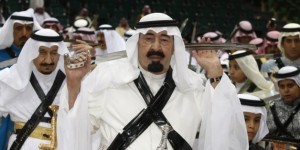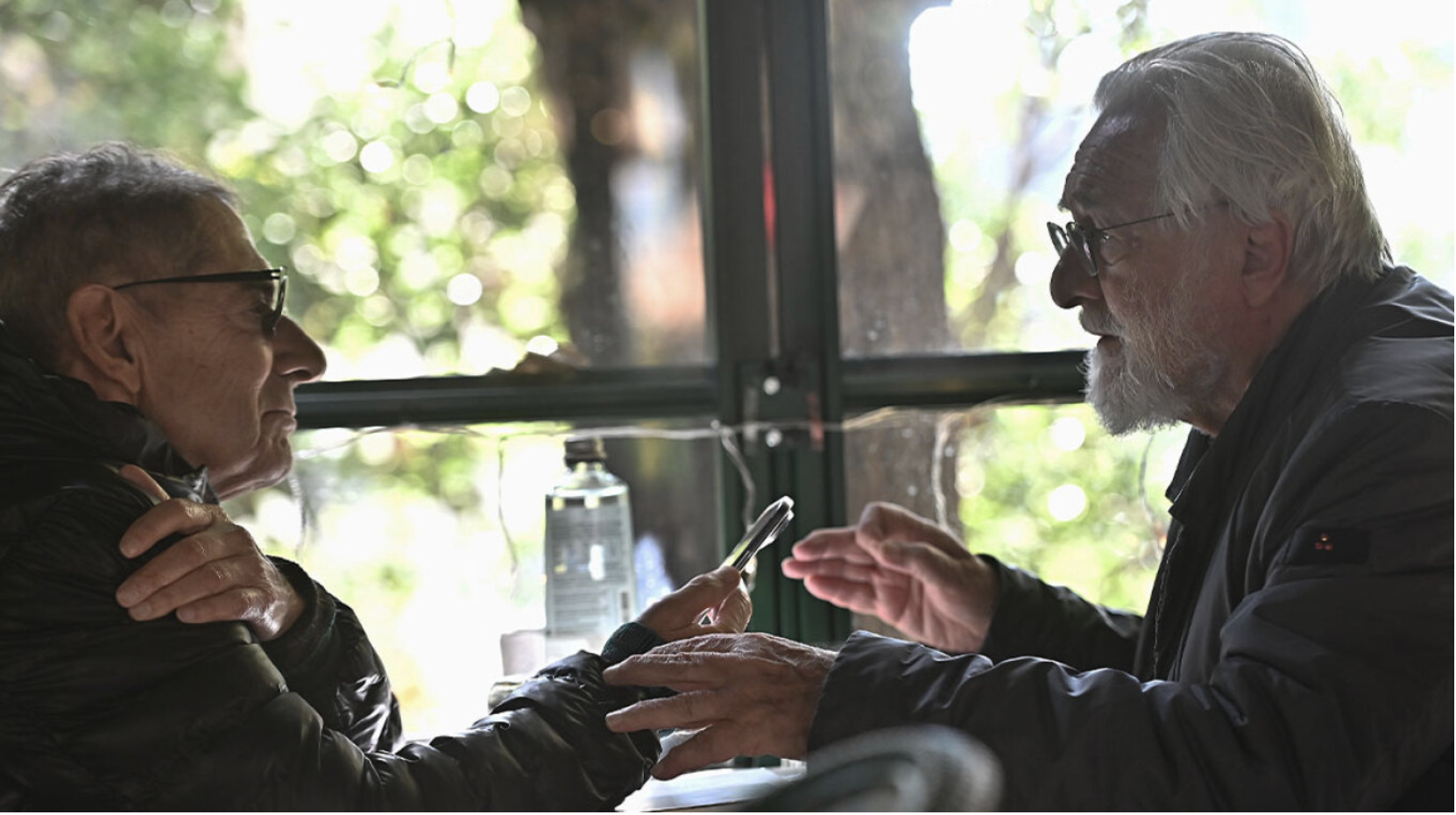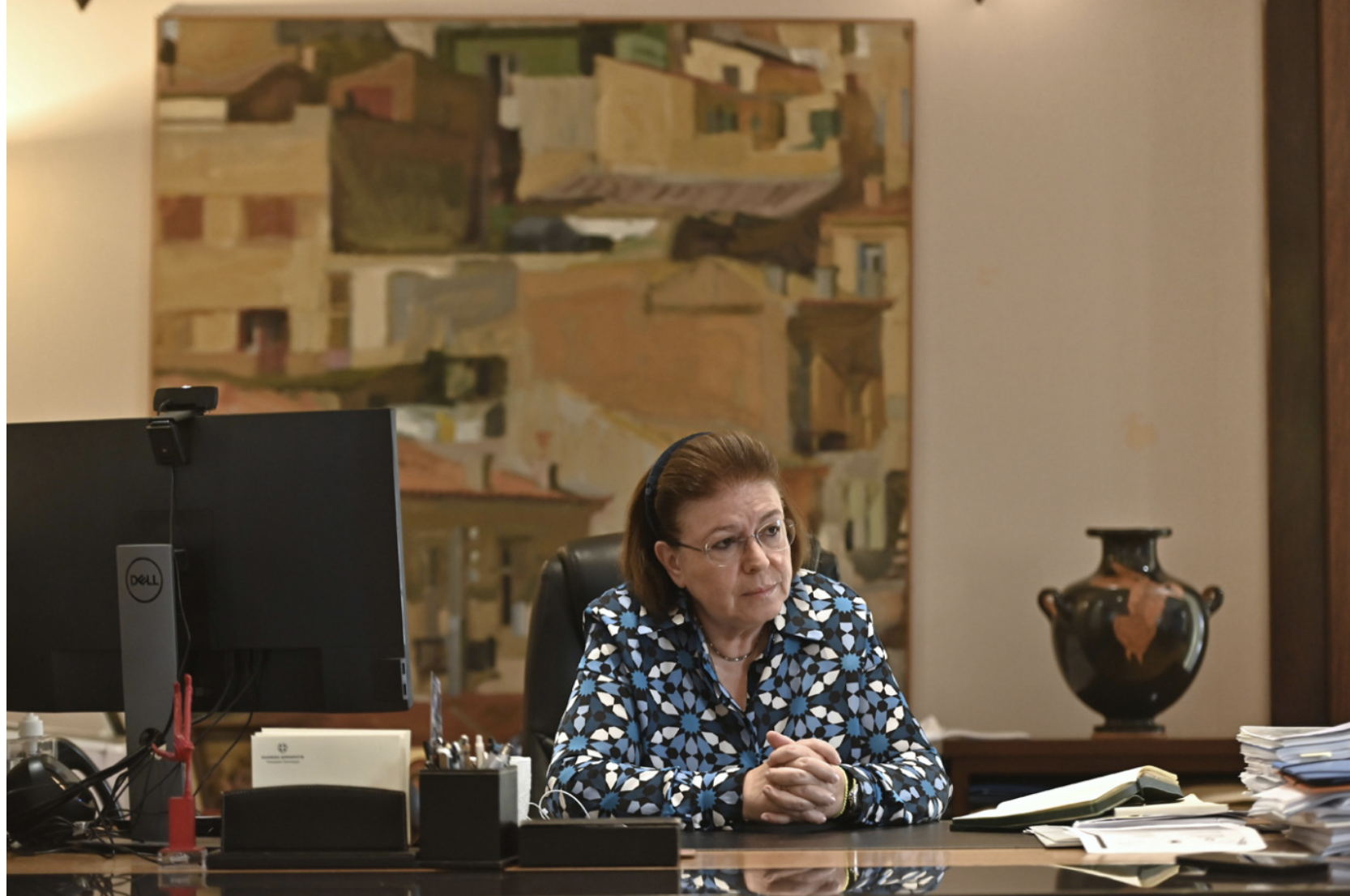This article is Part II of Alastair Crooke’s* historical analysis of the roots of ISIS and its impact on the future of the Middle East. Read Part I here.
ISIS is indeed a veritable time bomb inserted into the heart of the Middle East. But its destructive power is not as commonly understood. It is not with the “March of the Beheaders”; it is not with the killings; the seizure of towns and villages; the harshest of “justice” — terrible though they are — that its true explosive power lies. It is yet more potent than its exponential pull on young Muslims, its huge arsenal of weapons and its hundreds of millions of dollars.
“We should understand that there is really almost nothing that the West can now do about it but sit and watch.”
Its real potential for destruction lies elsewhere — in the implosion of Saudi Arabia as a foundation stone of the modern Middle East. We should understand that there is really almost nothing that the West can now do about it but sit and watch.
The clue to its truly explosive potential, as Saudi scholar Fouad Ibrahim has pointed out (but which has passed, almost wholly overlooked, or its significance has gone unnoticed), is ISIS’ deliberate and intentional use in its doctrine — of the language of Abd-al Wahhab, the 18th century founder, together with Ibn Saud, of Wahhabism and the Saudi project:
Abu Omar al-Baghdadi, the first “prince of the faithful” in the Islamic State of Iraq, in 2006 formulated, for instance, the principles of his prospective state … Among its goals is disseminating monotheism “which is the purpose [for which humans were created] and [for which purpose they must be called] to Islam…” This language replicates exactly Abd-al Wahhab’s formulation. And, not surprisingly, the latter’s writings and Wahhabi commentaries on his works are widely distributed in the areas under ISIS’ control and are made the subject of study sessions. Baghdadi subsequently was to note approvingly, “a generation of young men [have been] trained based on the forgotten doctrine of loyalty and disavowal.”
And what is this “forgotten” tradition of “loyalty and disavowal?” It is Abd al-Wahhab’s doctrine that belief in a sole (for him an anthropomorphic) God — who was alone worthy of worship — was in itself insufficient to render man or woman a Muslim?
He or she could be no true believer, unless additionally, he or she actively denied (and destroyed) any other subject of worship. The list of such potential subjects of idolatrous worship, which al-Wahhab condemned as idolatry, was so extensive that almost all Muslims were at risk of falling under his definition of “unbelievers.” They therefore faced a choice: Either they convert to al-Wahhab’s vision of Islam — or be killed, and their wives, their children and physical property taken as the spoils of jihad. Even to express doubts about this doctrine, al-Wahhab said, should occasion execution.
“Through its intentional adoption of this Wahhabist language, ISIS is knowingly lighting the fuse to a bigger regional explosion — one that has a very real possibility of being ignited, and if it should succeed, will change the Middle East decisively.”
The point Fuad Ibrahim is making, I believe, is not merely to reemphasize the extreme reductionism of al-Wahhab’s vision, but to hint at something entirely different: That through its intentional adoption of this Wahhabist language, ISIS is knowingly lighting the fuse to a bigger regional explosion — one that has a very real possibility of being ignited, and if it should succeed, will change the Middle East decisively.
For it was precisely this idealistic, puritan, proselytizing formulation by al-Wahhab that was “father” to the entire Saudi “project” (one that was violently suppressed by the Ottomans in 1818, but spectacularly resurrected in the 1920s, to become the Saudi Kingdom that we know today). But since its renaissance in the 1920s, the Saudi project has always carried within it, the “gene” of its own self-destruction.
THE SAUDI TAIL HAS WAGGED BRITAIN AND U.S. IN THE MIDDLE EAST
Paradoxically, it was a maverick British official, who helped embed the gene into the new state. The British official attached to Aziz, was one Harry St. John Philby (the father of the MI6 officer who spied for the Soviet KGB, Kim Philby). He was to become King Abd al-Aziz’s close adviser, having resigned as a British official, and was until his death, a key member of the Ruler’s Court. He, like Lawrence of Arabia, was an Arabist. He was also a convert to Wahhabi Islam and known as Sheikh Abdullah.
St. John Philby was a man on the make: he had determined to make his friend, Abd al-Aziz, the ruler of Arabia. Indeed, it is clear that in furthering this ambition he was not acting on official instructions. When, for example, he encouraged King Aziz to expand in northern Nejd, he was ordered to desist. But (as American author, Stephen Schwartz notes), Aziz was well aware that Britain had pledged repeatedly that the defeat of the Ottomans would produce an Arab state, and this no doubt, encouraged Philby and Aziz to aspire to the latter becoming its new ruler.
It is not clear exactly what passed between Philby and the Ruler (the details seem somehow to have been suppressed), but it would appear that Philby’s vision was not confined to state-building in the conventional way, but rather was one of transforming the wider Islamic ummah (or community of believers) into a Wahhabist instrument that would entrench the al-Saud as Arabia’s leaders. And for this to happen, Aziz needed to win British acquiescence (and much later, American endorsement). “This was the gambit that Abd al-Aziz made his own, with advice from Philby,” notes Schwartz.
BRITISH GODFATHER OF SAUDI ARABIA
In a sense, Philby may be said to be “godfather” to this momentous pact by which the Saudi leadership would use its clout to “manage” Sunni Islam on behalf of western objectives (containing socialism, Ba’athism, Nasserism, Soviet influence, Iran, etc.) — and in return, the West would acquiesce to Saudi Arabia’s soft-power Wahhabisation of the Islamic ummah (with its concomitant destruction of Islam’s intellectual traditions and diversity and its sowing of deep divisions within the Muslim world).
“In political and financial terms, the Saud-Philby strategy has been an astonishing success. But it was always rooted in British and American intellectual obtuseness: the refusal to see the dangerous ‘gene’ within the Wahhabist project, its latent potential to mutate, at any time, back into its original a bloody, puritan strain. In any event, this has just happened: ISIS is it.”
As a result — from then until now — British and American policy has been bound to Saudi aims (as tightly as to their own ones), and has been heavily dependent on Saudi Arabia for direction in pursuing its course in the Middle East.
In political and financial terms, the Saud-Philby strategy has been an astonishing success (if taken on its own, cynical, self-serving terms). But it was always rooted in British and American intellectual obtuseness: the refusal to see the dangerous “gene” within the Wahhabist project, its latent potential to mutate, at any time, back into its original a bloody, puritan strain. In any event, this has just happened: ISIS is it.
Winning western endorsement (and continued western endorsement), however, required a change of mode: the “project” had to change from being an armed, proselytizing Islamic vanguard movement into something resembling statecraft. This was never going to be easy because of the inherent contradictions involved (puritan morality versus realpolitik and money) — and as time has progressed, the problems of accommodating the “modernity” that statehood requires, has caused “the gene” to become more active, rather than become more inert.
Even Abd al-Aziz himself faced an allergic reaction: in the form of a serious rebellion from his own Wahhabi militia, the Saudi Ikhwan. When the expansion of control by the Ikhwan reached the border of territories controlled by Britain, Abd al-Aziz tried to restrain his militia (Philby was urging him to seek British patronage), but the Ikwhan, already critical of his use of modern technology (the telephone, telegraph and the machine gun), “were outraged by the abandonment of jihad for reasons of worldly realpolitik … They refused to lay down their weapons; and instead rebelled against their king … After a series of bloody clashes, they were crushed in 1929. Ikhwan members who had remained loyal, were later absorbed into the [Saudi] National Guard.”
King Aziz’s son and heir, Saud, faced a different form of reaction (less bloody, but more effective). Aziz’s son was deposed from the throne by the religious establishment — in favor of his brother Faisal — because of his ostentatious and extravagant conduct. His lavish, ostentatious style, offended the religious establishment who expected the “Imam of Muslims,” to pursue a pious, proselytizing lifestyle.
King Faisal, Saud’s successor, in his turn, was shot by his nephew in 1975, who had appeared at Court ostensibly to make his oath of allegiance, but who instead, pulled out a pistol and shot the king in his head. The nephew had been perturbed by the encroachment of western beliefs and innovation into Wahhabi society, to the detriment of the original ideals of the Wahhabist project.
SEIZING THE GRAND MOSQUE IN 1979
Far more serious, however, was the revived Ikhwan of Juhayman al-Otaybi, which culminated in the seizure of the Grand Mosque by some 400-500 armed men and women in 1979. Juhayman was from the influential Otaybi tribe from the Nejd, which had led and been a principal element in the original Ikhwan of the 1920s.
Juhayman and his followers, many of whom came from the Medina seminary, had the tacit support, amongst other clerics, of Sheikh Abdel-Aziz Bin Baz, the former Mufti of Saudi Arabia. Juhayman stated that Sheikh Bin Baz never objected to his Ikhwan teachings (which were also critical of ulema laxity towards “disbelief”), but that bin Baz had blamed him mostly for harking on that “the ruling al-Saud dynasty had lost its legitimacy because it was corrupt, ostentatious and had destroyed Saudi culture by an aggressive policy of westernisation.”
Significantly, Juhayman’s followers preached their Ikhwani message in a number of mosques in Saudi Arabia initially without being arrested, but when Juhayman and a number of the Ikhwan finally were held for questioning in 1978. Members of the ulema (including bin Baz) cross-examined them for heresy, but then ordered their release because they saw them as being no more than traditionalists harkening back to the Ikhwan— like Juhayman grandfather — and therefore not a threat.
Even when the mosque seizure was defeated and over, a certain level of forbearance by the ulema for the rebels remained. When the government asked for a fatwa allowing for armed force to be used in the mosque, the language of bin Baz and other senior ulema was curiously restrained. The scholars did not declare Juhayman and his followers non-Muslims, despite their violation of the sanctity of the Grand Mosque, but only termed them al-jamaah al-musallahah (the armed group).
The group that Juhayman led was far from marginalized from important sources of power and wealth. In a sense, it swam in friendly, receptive waters. Juhayman’s grandfather had been one of the leaders of the the original Ikhwan, and after the rebellion against Abdel Aziz, many of his grandfather’s comrades in arms were absorbed into the National Guard — indeed Juhayman himself had served within the Guard — thus Juhayman was able to obtain weapons and military expertise from sympathizers in the National Guard, and the necessary arms and food to sustain the siege were pre-positioned, and hidden, within the Grand Mosque. Juhayman was also able to call on wealthy individuals to fund the enterprise.
ISIS VS. WESTERNIZED SAUDIS
The point of rehearsing this history is to underline how uneasy the Saudi leadership must be at the rise of ISIS in Iraq and Syria. Previous Ikhwani manifestations were suppressed — but these all occurred inside the kingdom.
ISIS however, is a neo-Ikhwani rejectionist protest that is taking place outside the kingdom — and which, moreover, follows the Juhayman dissidence in its trenchant criticism of the al-Saud ruling family.
This is the deep schism we see today in Saudi Arabia, between the modernizing current of which King Abdullah is a part, and the “Juhayman” orientation of which bin Laden, and the Saudi supporters of ISIS and the Saudi religious establishment are a part. It is also a schism that exists within the Saudi royal family itself.
According to the Saudi-owned Al-Hayat newspaper, in July 2014 “an opinion poll of Saudis [was] released on social networking sites, claiming that 92 percent of the target group believes that ‘IS conforms to the values of Islam and Islamic law.’” The leading Saudi commentator, Jamal Khashoggi, recently warned of ISIS’ Saudi supporters who “watch from the shadows.”
There are angry youths with a skewed mentality and understanding of life and sharia, and they are canceling a heritage of centuries and the supposed gains of a modernization that hasn’t been completed. They turned into rebels, emirs and a caliph invading a vast area of our land. They are hijacking our children’s minds and canceling borders. They reject all rules and legislations, throwing it [a]way … for their vision of politics, governance, life, society and economy. [For] the citizens of the self-declared “commander of the faithful,” or Caliph, you have no other choice … They don’t care if you stand out among your people and if you are an educated man, or a lecturer, or a tribe leader, or a religious leader, or an active politician or even a judge … You must obey the commander of the faithful and pledge the oath of allegiance to him. When their policies are questioned, Abu Obedia al-Jazrawi yells, saying: “Shut up. Our reference is the book and the Sunnah and that’s it.”
“What did we do wrong?” Khashoggi asks. With 3,000-4,000 Saudi fighters in the Islamic State today, he advises of the need to “look inward to explain ISIS’ rise”. Maybe it is time, he says, to admit “our political mistakes,” to “correct the mistakes of our predecessors.”
MODERNIZING KING THE MOST VULNERABLE
The present Saudi king, Abdullah, paradoxically is all the more vulnerable precisely because he has been a modernizer. The King has curbed the influence of the religious institutions and the religious police — and importantly has permitted the four Sunni schools of jurisprudence to be used, by those who adhere to them (al-Wahhab, by contrast, objected to all other schools of jurisprudence other than his own).
“The key political question is whether the simple fact of ISIS’ successes, and the full manifestation (flowering) of all the original pieties and vanguardism of the archetypal impulse, will stimulate and activate the dissenter ‘gene’ — within the Saudi kingdom. If it does, and Saudi Arabia is engulfed by the ISIS fervor, the Gulf will never be the same again. Saudi Arabia will deconstruct and the Middle East will be unrecognizable.”
It is even possible too for Shiite residents of eastern Saudi Arabia to invoke Ja’afri jurisprudence and to turn to Ja’afari Shiite clerics for rulings. (In clear contrast, al-Wahhab held a particular animosity towards the Shiite and held them to be apostates. As recently as the 1990s, clerics such as bin Baz — the former Mufti — and Abdullah Jibrin reiterated the customary view that the Shiite were infidels).
Some contemporary Saudi ulema would regard such reforms as constituting almost a provocation against Wahhabist doctrines, or at the very least, another example of westernization. ISIS, for example, regards any who seek jurisdiction other than that offered by the Islamic State itself to be guilty of disbelief — since all such “other” jurisdictions embody innovation or “borrowings” from other cultures in its view.
The key political question is whether the simple fact of ISIS’ successes, and the full manifestation (flowering) of all the original pieties and vanguardism of the archetypal impulse, will stimulate and activate the dissenter ‘gene’ — within the Saudi kingdom.
If it does, and Saudi Arabia is engulfed by the ISIS fervor, the Gulf will never be the same again. Saudi Arabia will deconstruct and the Middle East will be unrecognizable.
“They hold up a mirror to Saudi society that seems to reflect back to them an image of ‘purity’ lost”
In short, this is the nature of the time bomb tossed into the Middle East. The ISIS allusions to Abd al-Wahhab and Juhayman (whose dissident writings are circulated within ISIS) present a powerful provocation: they hold up a mirror to Saudi society that seems to reflect back to them an image of “purity” lost and early beliefs and certainties displaced by shows of wealth and indulgence.
This is the ISIS “bomb” hurled into Saudi society. King Abdullah — and his reforms — are popular, and perhaps he can contain a new outbreak of Ikwhani dissidence. But will that option remain a possibility after his death?
And here is the difficulty with evolving U.S. policy, which seems to be one of “leading from behind” again — and looking to Sunni states and communities to coalesce in the fight against ISIS (as in Iraq with the Awakening Councils).
It is a strategy that seems highly implausible. Who would want to insert themselves into this sensitive intra-Saudi rift? And would concerted Sunni attacks on ISIS make King Abdullah’s situation better, or might it inflame and anger domestic Saudi dissidence even further? So whom precisely does ISIS threaten? It could not be clearer. It does not directly threaten the West (though westerners should remain wary, and not tread on this particular scorpion).
The Saudi Ikhwani history is plain: As Ibn Saud and Abd al-Wahhab made it such in the 18th century; and as the Saudi Ikhwan made it such in the 20th century. ISIS’ real target must be the Hijaz — the seizure of Mecca and Medina — and the legitimacy that this will confer on ISIS as the new Emirs of Arabia.
* Former MI-6 agent. Author of “Resistance: The Essence of Islamic Revolution”
Ask me anything
Explore related questions





